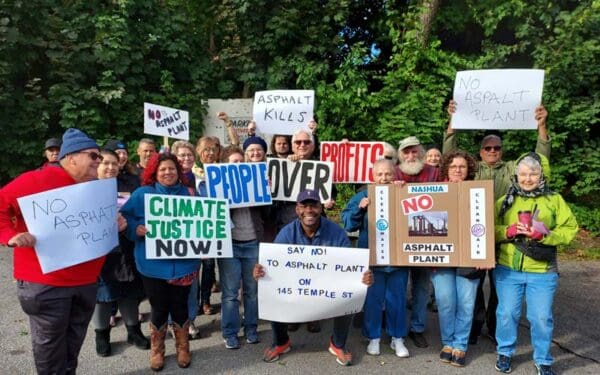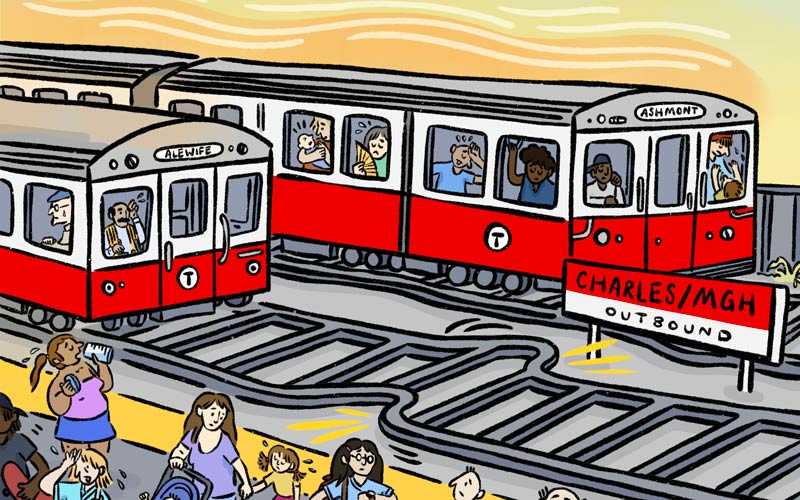
Our transportation system already experiences the impact of extreme weather. The MBTA must prioritize climate resilience now. Illustration: Kit Collins.
When I moved to Boston in 2020, friends and family warned me that the cold winters would make it difficult to get around. I heard about 2015’s Snowmaggedon and how record snowfalls shut down roads, streets, and trains. While still learning my route to work, I survived my first winter taking the Orange Line. But I wasn’t prepared for what would come next: shutdowns and countless other inconveniences, not only in the winter but in the spring, summer, and fall, too.
The truth is that year-round, climate change has made our weather unpredictable and more extreme. And the MBTA, already under fire for blatantly failing to provide safe and reliable service, has been unable to cope with the added reality of extreme weather. As a new MBTA chief tackles the job of reform, he must prioritize how the transit system will cope with climate change.
Across modes of transportation, neighborhoods, and seasons, extreme weather threatens the safety of MBTA riders. Here’s how:
Winter
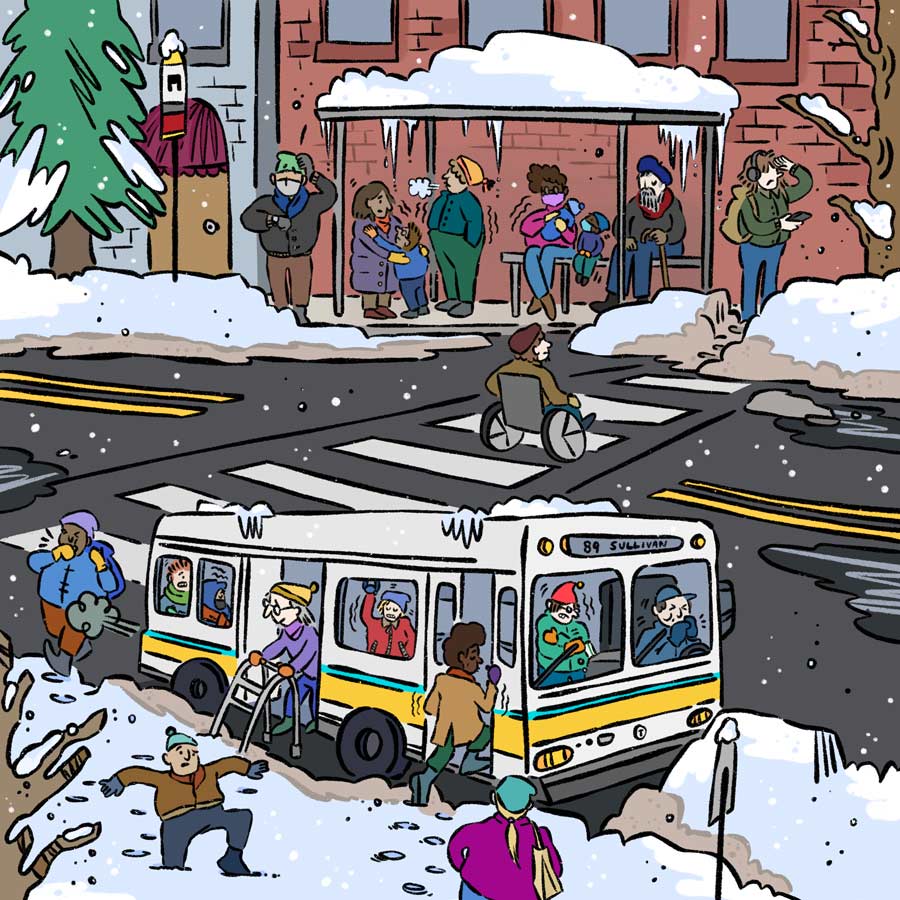
Frigid winter temperatures can make riding the T quite a saga. Coming from a much warmer climate, I assumed a city familiar with substantial snow and bitter temperatures would keep trains and buses running like clockwork. I was wrong. And during the coldest months of waiting for extended periods on train platforms, I developed the numb toes to prove it. In 2015, Greater Boston riders endured 56 days in which the MBTA failed to put all cars in service. But even without major snowstorms, every year, winters expose a frail transit infrastructure. For commuters like me, a winter’s day in Greater Boston means another frozen odyssey climbing through snowdrifts blocking access at bus stops and train stations.
Spring
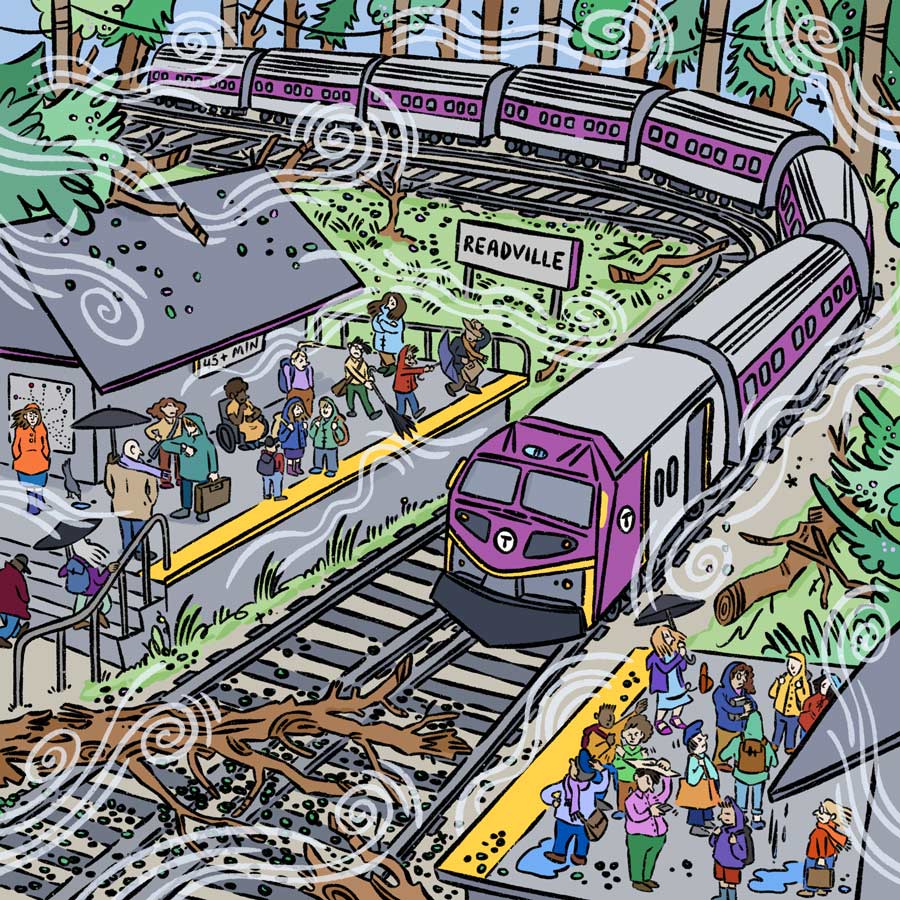
Spring has arrived – finally, some green. But soon, I realize that, in Boston, the season comes with new discomforts – like delayed trains due to fallen trees. Climate change has caused more powerful storms that damage trees and critical wiring, signal, and communication systems. The MBTA has been lax about pruning vegetation overgrowth and preparing itself for the inevitable damage storms will cause. And what does that mean for T riders like me? Getting to the office late. Again!
Summer
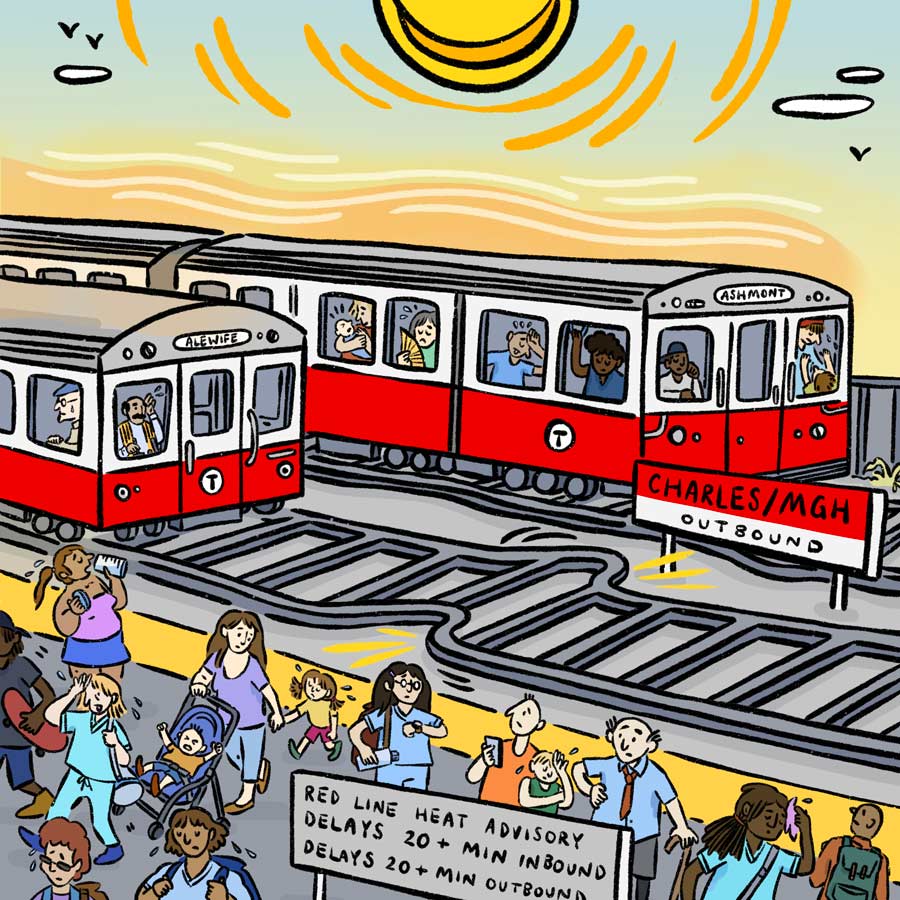
In recent summers, Greater Boston has endured unprecedented heatwaves. Suffocating temperatures, sometimes soaring over 100 degrees, are more common. I know because I’ve stood on a sweltering subway platform, planted in front of a noisy giant fan, hoping to find relief. Sometimes, I’ve had to wait for a mysterious “20+ minutes” until the next train arrives. The reason? Overheated tracks buckle and expand. So, to avoid train derailments, the MBTA slows trains in summer heat to prevent accidents.
But here’s the problem: Climate change will mean hotter, longer heat waves. We know that. And we deserve a transit system that doesn’t grind to a halt every time the mercury soars.
Fall
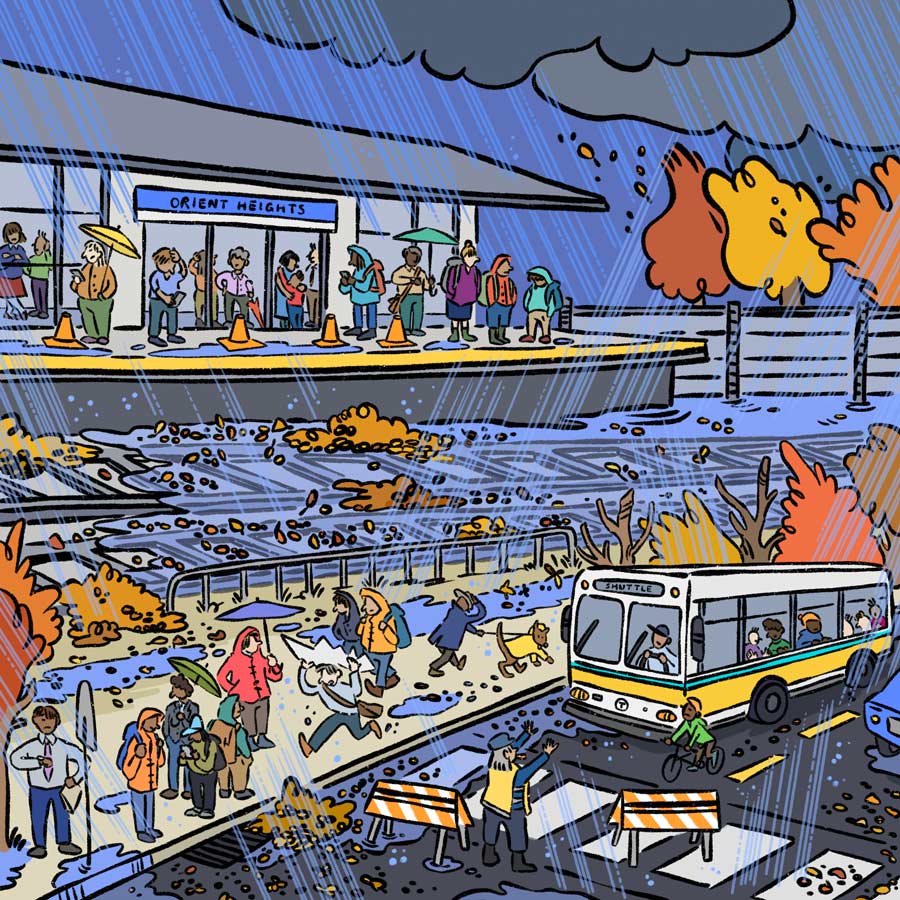
Fall is a season in which hurricanes and nor’easters often bring heavy rains. Even so, I would never have expected to witness a paddler pushing a kayak against the current on Morrisey Boulevard in Dorchester. While this should have been a rare sight, for me, it wasn’t. Over the past few years, floods across Greater Boston have submerged parts of the MBTA system – including streets and tracks – leaving people stranded without a way home. Recent storms have also caused major flooding in Aquarium Station on the Blue Line and near Fenway Station on the Green Line.
As sea levels continue to rise, heavy rainfalls will pose an ever-greater threat to our transit and communities. And what’s the MBTA doing? The agency has already conducted vulnerability assessments for much of the system and put flood barriers in two train stations. But there’s much work left to be done. For starters, they haven’t fully implemented the recommendations from their own assessment. Critical flood prevention work needs to become part of regular safety maintenance instead of repair work.
The Ride Ahead: The MBTA Must Prioritize Climate Resilience
Climate resilience is no small concern – it’s a safety, economic, and social justice issue. For many, the lack of access to reliable transportation means losing a lifeline to critical resources, including schools, jobs, and healthcare.
In fact, transit delays disproportionately reduce job access for riders of color, those with low incomes, and people with limited English proficiency. Preparing for the impacts of climate change can ensure that our communities can continue to access essential services and opportunities.
CLF is calling on state regulators, legislators, and the MBTA to make the necessary upgrades to our transit system now so that we’re weatherproofed and ready for the worst when these extreme weather conditions hit.
Climate change is already here. And it’s clear to those of us who use the T year-round that the MBTA is —quite literally— running late.


